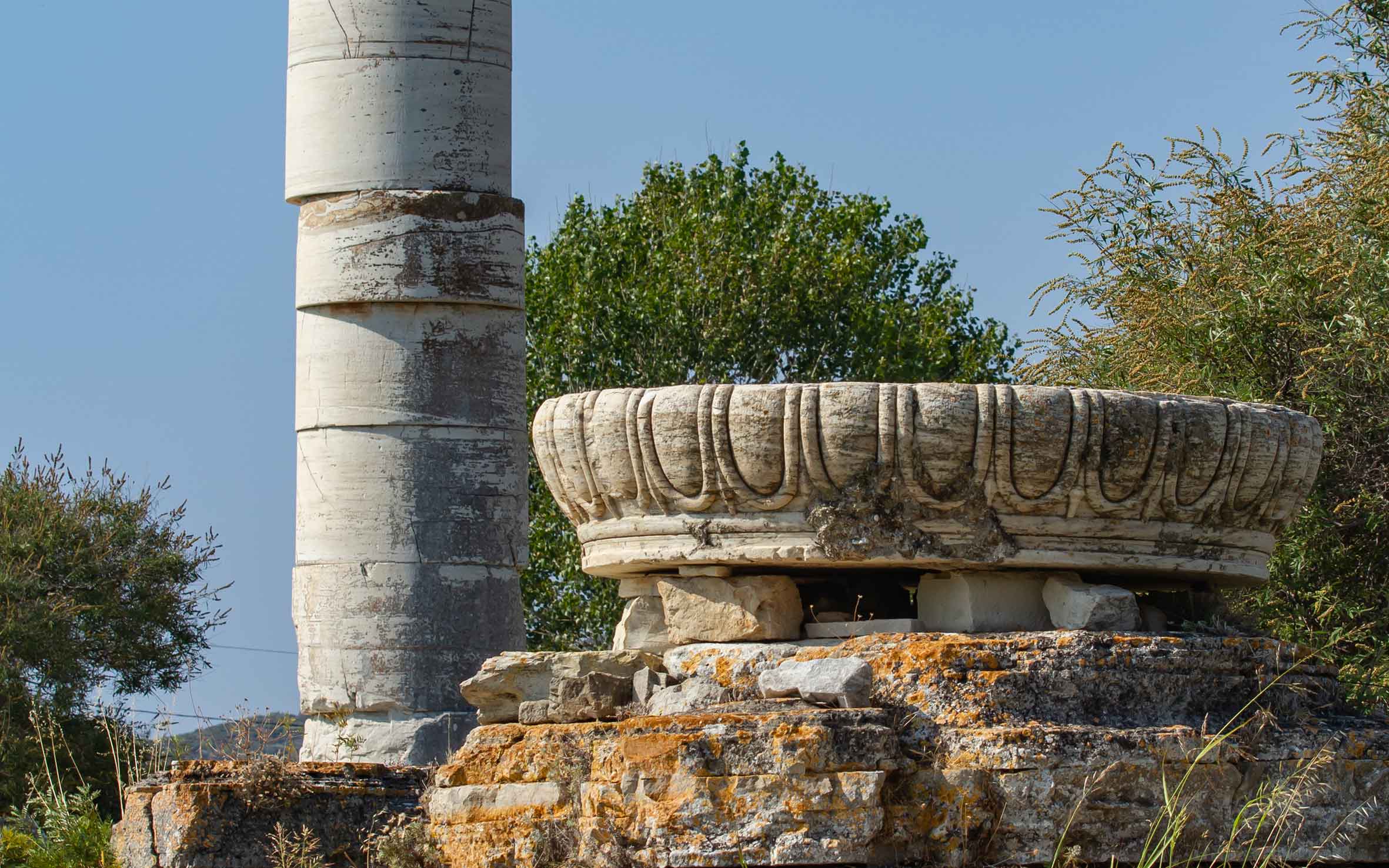Beyond Delphi: Exploring the Lesser-Known Centers of Ancient...
Discover the lesser-known oracles of ancient...

All that remains of the Great Temple of Hera is a single standing column.
© Shutterstock
The Samian Heraion was a large religious sanctuary dedicated to the cult worship of Hera, queen of the Olympian gods and sister-wife of Zeus. Located on the island of Samos in the eastern Aegean, the sanctuary was home to the famous “Great Temple.” At 55 m x 108 m, it had one of the largest floor plans of any temple in the Greek world.
Religious activity at the Heraion can be traced back to the Mycenaean Bronze Age but it was in the 8th century BC that the first monumental temple of Hera was constructed, known as the Hekatompedos or “Hundred-Footer” (literally one hundred feet long). The second temple, erected in the 7th century BC, was among the first to be given an encircling colonnade, a feature that became an integral part of ancient Greek architecture. Following a series of reconstructions, a third temple was built in the late 6th century BC, a masterpiece of Ionic architecture described by Herodotus as “the largest temple of which we know.”
This period coincided with the reign of the tyrant Polycrates, whose ambitious building program also included a 1 kilometer-long aqueduct known as the Eupalinian, as well as extensive harbor works. Understanding the importance of sea power, Polycrates assembled one of the most powerful naval fleets in the Aegean.
The site of the temple’s ruins, with its sole standing column, was designated a UNESCO World Heritage Site in 1992.
Discover the lesser-known oracles of ancient...
From temples and festivals to front...